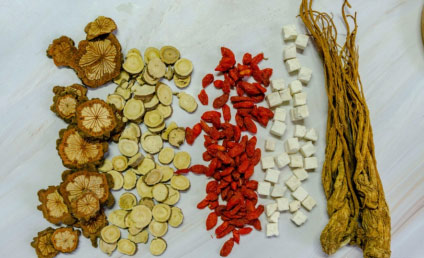Traditional Chinese medicine has been developed for thousands of years and is now widely used throughout the world. In recent years, with the general improvement of people’s drug safety awareness, the inconsistency of Chinese medicine quality standards, the instability and uncertainty of clinical safety and effectiveness have been increasingly criticized both inside and outside the industry. The rapid development of various analytical techniques has greatly promoted the progress of quality control of traditional Chinese medicine.

In the previous article “Scientific Instruments in Quality Control of Traditional Chinese Medicine – Chromatography and Spectroscopy”, Xiaobian compiled the chromatographic and spectral techniques and related instruments used in the quality control of traditional Chinese medicine. In this paper, we will take the nuclear magnetic field. Several important analytical techniques, such as resonance spectroscopy, mass spectrometry and its combination, and DNA molecular marker technology, are sorted out.
Nuclear Magnetic Resonance Spectroscopy of Quality Control of Traditional Chinese Medicine
The most important application of nuclear magnetic resonance is to determine the molecular structure of a compound by physical methods, and the material basic research on the effectiveness of traditional Chinese medicine is an important link in the quality control of traditional Chinese medicine. The chemical structure of the active ingredients in traditional Chinese medicine can be obtained by using nuclear magnetic resonance technology.
In addition to the use of nuclear magnetic resonance technology alone, HPLC-NMR combined technology has also been applied to the quality control of traditional Chinese medicine. Through the combined technology, chromatographic separation and spectral structure identification can be continuously performed, and the problem of wasting time and manpower and material resources in the conventional analysis method, which is first separated and purified and then identified, is avoided.
| Technology type | Technical principle | Application direction | Application examples |
| NMR technology | By chemical shift value, peak multiplicity,coupling constant value, peak relative intensity and correlation peaks in various two-dimensional and multi-dimensional spectra, qualitative structures such as the connection mode of atoms in the molecule and the relative orientation of space are provided. information. | (1) Qualitative analysis of compounds in combination with other analytical methods such as mass spectrometry (2) 1H NMR spectrum is suitable for quantitative analysis | (1) The carbon and hydrogen spectra of the vine alkaloids (2) Prediction of nuclear magnetic resonance carbon spectra and hydrogen spectra of artemisinin molecules (3) Identification of berberine and berberine counterfeit according to the presence or absence of characteristic peaks of protoberberine alkaloids |
Mass spectrometry of Chinese medicine quality control and its combined technology
Mass spectrometry is mainly used to analyze and identify compounds extracted from natural products. Organic mass spectrometry can give information on molecular weight, molecular formula and fragment ion cleavage mode and organic molecular structure type of organic compounds. Because mass spectrometry and its combination technology are powerful in the chemical structure of materials, they are widely used in the quality control of various Chinese herbal medicines.
| Combined technology type | Technical introduction | Application examples |
| Mass spectrometry | Mass spectrometry provides information on molecular mass and structure, and quantitative methods can be used for internal standard or external standard methods. | (1) Determine the chemical composition of the isolated components of Epimedium (2) By comparing the difference between the processing of Aconite and Aconite and Zhiwenfeng, whether it is judged by the Chinese medicine of Aconite |
| GC/MS | High sensitivity and strong anti-interference ability, it is the first choice for analysis and identification of volatile components | (1) Identification of volatile components in Cordyceps sinensis (2) Comparing the content of curcumol and other substances in different sources |
| LC-MS | Simultaneous multi-component detection for information on target compounds by retention time, molecular weight and fragmentation | (1) Judging the peak of paclitaxel in the crude extract of Taxus chinensis and its wound healing tissue (2) Identification of toxic substances produced by Bawei Dihuang Recipe and Ginseng Decoction |
| Capillary Electrophoresis-Pure Combination | Most capillary electrophoresis modes of operation can be combined with mass spectrometry. When selecting an interface, pay attention to the low flow rate characteristics of capillary electrophoresis and use volatile buffer | Isolation and identification of alkaloids from powdered methanol |
| Supercritical fluid chromatography-mass spectrometry | Mainly using atmospheric pressure chemical ionization or electrospray ionization interface. The chromatographic effluent is converted to a gaseous state by a heated restrictor between the column and the ion source, and is analyzed by mass spectrometry. |
DNA molecular marker technology for quality control of traditional Chinese medicine
DNA molecular marker technology can be used to compare the genetic diversity of DNA molecules between herbs, thus identifying the source of the drug and determining the method of learning. DNA fingerprinting technology has important value and broad application prospects in the fields of medicinal material identification, GAP implementation, medicinal materials research, genetic breeding and planting resources research, and quality control of proprietary Chinese medicines.
At present, researchers have used DNA molecular marker technology to identify DNA fingerprints of Panax notoginseng in different regions, and based on their different genetic characteristics, identify the Sanqi herbs in different regions. In addition, researchers have used this technology to establish a molecular taxonomic identification kit for Chinese herbal medicine deer whip.
In addition to the above technical methods, more advanced analytical methods have been continuously developed and applied in recent years, such as ultra-high performance liquid chromatography, two-dimensional liquid chromatography, combined online identification technology, etc., in the authenticity identification of Chinese herbal medicines, It plays a major role in the separation and identification of components and the detection of toxic substances.
With the continuous improvement of science and technology, the corresponding instruments and equipment are more precise and efficient. Various separation, analysis and detection technologies such as chromatography, mass spectrometry, spectroscopy, nuclear magnetic resonance spectroscopy and DNA molecular markers promote the development of quality control of traditional Chinese medicine and ensure better Chinese medicine. The fulfillment of the mission of safeguarding human health.
 NIUMAG
NIUMAG